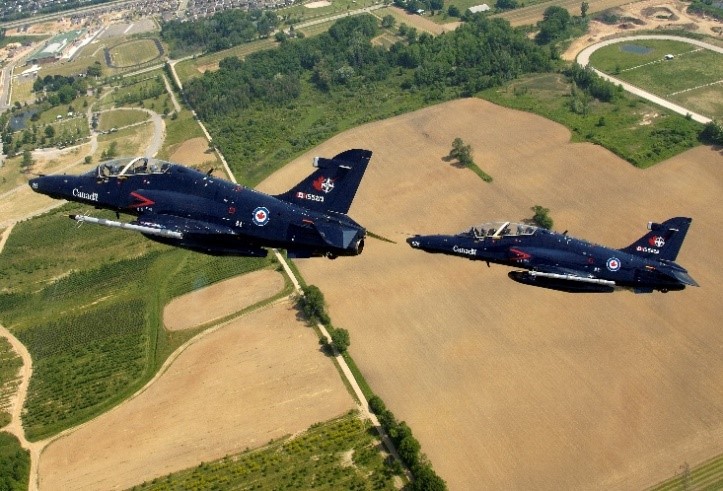CT156 Harvard II / CT155 Hawk – Epilogue
| Type: | CT156 Harvard II / CT155 Hawk |
|---|---|
| Location: | Moose Jaw, SK |
| Date: | 3 September 2020 |
All aircraft involved in this occurrence were part of the NATO Flying Training program in Moose Jaw, Saskatchewan. A Near Mid-Air Collision occurred between a CT156 Harvard II on a simulated minimum fuel Precision Approach Radar (PAR) and a formation of two CT155 Hawk aircraft on the downwind leg in the circuit.
The Harvard II aircraft (Call Sign (C/S) Apache) was guided by a trainee PAR controller for a simulated minimum fuel PAR to runway 29R. Concurrently, a formation of two Hawk aircraft (C/S Slayer) were on an extended downwind to set up for a 10 nautical mile straight-in approach with the tower controller. Just prior to the occurrence, another Harvard II (C/S Bandit) was joining the inner traffic pattern from the North. The C/S Bandit crew saw the C/S Slayer formation converging with only 500 ft vertical separation and elected to carry out a left hand 360° turn to join the circuit behind the C/S Slayer formation. Both the PAR and tower controllers passed the C/S Bandit traffic to C/S Apache and C/S Slayer respectively. The tower controller requested confirmation from C/S Slayer if they had C/S Apache visual. C/S Slayer reported they had the traffic visual, but they were unaware that they in fact were visual with C/S Bandit instead. Unaware of C/S Slayer at 3500 ft Above Sea Level (ASL), the trainee PAR controller cleared C/S Apache to descend from 5000 ft to 3400 ft ASL. A last second traffic alert from the instructor PAR controller to the trainee PAR controller resulted in a traffic call to C/S Apache. The Instructor Pilot at the controls of C/S Apache noticed C/S Slayer on a collision course at the same altitude at their 2 o’clock position. A 4g avoidance manoeuvre (climb) was immediately initiated in order to avoid C/S Slayer, missing them by approximately 300 ft vertical distance. Once clear of C/S Slayer, C/S Apache resumed and continued with the PAR approach.
All aircraft landed safely at Moose Jaw with no injuries to the crew or aircraft damage as a result of this occurrence.
The investigation did not reveal any mechanical or technical issues attributable to this occurrence. The investigation focused on multiple human factor aspects that relate to lookout, airspace management, instructional supervision, Air Traffic Control capabilities, radio frequency management, and rejoin procedures.
The investigation recommends the incorporation of a traffic advisory/avoidance system in addition to standardized high visibility paint schemes for all CFB Moose Jaw training aircraft; software improvements to CFB Moose Jaw Air Controller radar processing displays; and amendments to Simulated Minimum Fuel Precision Approach Radar procedures including the establishment of formalized timings for the approaches.

Caption
CT156 Harvard II / CT155 Hawk

Caption
CT156 Harvard II / CT155 Hawk